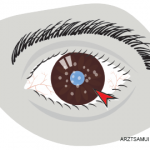Strong recommendations are those for which the guideline voting panel was confident the benefits of the action outweigh the risks and would apply to most or all patients.
Conditional recommendations are those for which the voting panel had less confidence in the risk–benefit assessment due to low quality evidence, with a preference for shared decision making because of known or expected variations in patient values and preferences. All treatment recommendations are conditional, the guideline authors say. For example, in children and adolescents with JIA and active chronic anterior uveitis starting systemic treatment, subcutaneous methotrexate is conditionally preferred over oral. So, too, is starting methotrexate and a monoclonal antibody TNFi immediately in cases of severe active chronic anterior uveitis and sight-threatening complications.
Treatment Tactics
The guideline also includes recommendations for tapering patients off treatment and for escalating treatment even when disease activity is low.
“Allowing disease to smolder at a low level is not good,” says Dr. Holland. “Even if a child is asymptomatic, ultimately, there’s a high risk of vision-limiting complications, like glaucoma or cataracts, so eye disease needs to be aggressively treated to suppress the activity.”
Dr. Angeles-Han adds, “In general, children with uveitis tend to have a flare in their disease when treatment is tapered too early,” so the team recommends that disease be well controlled for at least two years before initiating taper in JIA-associated uveitis patients, accompanied by frequent monitoring.
She hopes better studies of JIA-associated uveitis will ultimately offer other treatment recommendations and to gain a better sense of the risk factors associated with the development of uveitis and severe disease in JIA patients.
Teamwork & Collaboration
Dr. Angeles-Han, Dr. Ringold and Dr. Holland each believe in the importance of teamwork and collaboration in the management of JIA patients with uveitis. “Patients deserve to be managed in a team approach,” says Dr. Holland. “Rheumatologists are the experts in the drugs and their side effects, but ophthalmologists are the experts in monitoring the effects of drugs on uveitis, so each group should understand what the other is doing.”
“I think what’s important—and what we are always going to go back to—is the ophthalmologic exam,” Dr. Angeles-Han says. “That’s where we need to have collaboration and communication between both subspecialists. … We have to all be on same page with screening and monitoring schedules and treatment.”
Kelly April Tyrrell writes about health, science and health policy. She lives in Madison, Wis.


